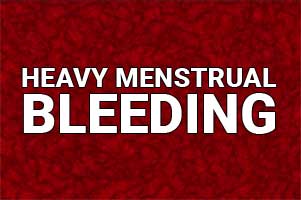- Home
- Editorial
- News
- Practice Guidelines
- Anesthesiology Guidelines
- Cancer Guidelines
- Cardiac Sciences Guidelines
- Critical Care Guidelines
- Dentistry Guidelines
- Dermatology Guidelines
- Diabetes and Endo Guidelines
- Diagnostics Guidelines
- ENT Guidelines
- Featured Practice Guidelines
- Gastroenterology Guidelines
- Geriatrics Guidelines
- Medicine Guidelines
- Nephrology Guidelines
- Neurosciences Guidelines
- Obs and Gynae Guidelines
- Ophthalmology Guidelines
- Orthopaedics Guidelines
- Paediatrics Guidelines
- Psychiatry Guidelines
- Pulmonology Guidelines
- Radiology Guidelines
- Surgery Guidelines
- Urology Guidelines
Screen teens with heavy menstruation for bleeding disorder, recommends ACOG

Screen teens with heavy menstruation for a bleeding disorder recommend ACOG
Adolescent girls with heavy menstrual bleeding should be assessed for bleeding disorders, according to a Committee Opinion issued by the American College of Obstetricians and Gynecologists. The American College of Obstetricians and Gynecologists has released recommendations and conclusions regarding bleeding disorders in adolescents:
Heavy menstrual bleeding is defined as excessive menstrual blood loss that interferes with a woman's physical, social, emotional, or material quality of life. If obstetrician–gynaecologists suspect that a patient has a bleeding disorder, they should work in coordination with a haematologist for laboratory evaluation and medical management.
Main recommendations regarding bleeding disorders in adolescents are:
- Heavy menstrual bleeding at menarche and in adolescence may be an important sentinel for an underlying bleeding disorder.
- If obstetrician–gynecologists suspect that a patient has a bleeding disorder, they should work in coordination with a hematologist for laboratory evaluation and medical management.
- When obtaining a medical history, it is important to identify risk factors for bleeding disorders as well as medical conditions that would alter management.
- Physical examination of the patient who presents with acute heavy menstrual bleeding should include assessment of hemodynamic stability, including orthostatic blood pressure and pulse measurements.
- In adolescent girls with heavy menstrual bleeding, speculum examination typically is not required.
- Evaluation of adolescent girls who present with heavy menstrual bleeding should include assessment for anemia from blood loss, including serum ferritin, the presence of an endocrine disorder leading to anovulation, and evaluation for the presence of a bleeding disorder.
- Routine ultrasonography should not be obtained solely for the workup of heavy menstrual bleeding in adolescents; however, it can be considered for patients who do not respond to initial management.
- The first-line approach to acute bleeding in the adolescent is medical management; surgery should be reserved for those who do not respond to medical therapy.
- Adolescents who are hemodynamically unstable or actively bleeding heavily should be hospitalized for management.
- In the absence of contraindications to estrogen, hormonal therapy for acute heavy menstrual bleeding can consist of intravenous conjugated estrogen every 4–6 hours; alternatively, monophasic combined oral contraceptive pills (OCPs) (in 30–50 microgram ethinyl estradiol formulation) can be used every 6–8 hours until the cessation of bleeding.
- Use of antifibrinolytics such as tranexamic acid or aminocaproic acid in oral and intravenous form may be used to stop bleeding.
- After correction of acute heavy menstrual bleeding, maintenance hormonal therapy can include combined hormonal contraceptives, oral and injectable progestins, and levonorgestrel-releasing intrauterine devices (LNG-IUDs).
- Iron replacement therapy should be provided for all reproductive-aged women with anemia due to bleeding.
- Nonmedical procedures should be considered when there is a lack of response to medical therapy if the patient is clinically unstable despite initial measures, or when severe heavy bleeding warrants further investigation, such as an examination under anesthesia.
- Obstetrician–gynecologists can provide important guidance to premenarchal and postmenarchal girls and their families about issues related to menses and should counsel all adolescent patients with a bleeding disorder about safe medication use and future surgical considerations.
- Adolescents in whom a bleeding disorder has been diagnosed should be reminded that products that prevent platelet adhesion, such as aspirin or nonsteroidal anti-inflammatory drugs, should be used only with the recommendation of a hematologist.
- In adolescents with known bleeding disorders, preoperative surgical evaluation, choice of hemostatic agents for control of intraoperative blood loss, and need for blood products should be determined in conjunction with a hematologist and an anesthesiologist.
ACOGAdolescent girlsAmerican College of Obstetricians and Gynecologistsbleeding disorderbleeding disordersheavy menstrual bleedingHMBMenstrual Bleedingoral contraceptive pillsscreeningteenagersteens
Source : Press ReleaseNext Story
NO DATA FOUND

Disclaimer: This site is primarily intended for healthcare professionals. Any content/information on this website does not replace the advice of medical and/or health professionals and should not be construed as medical/diagnostic advice/endorsement or prescription. Use of this site is subject to our terms of use, privacy policy, advertisement policy. © 2020 Minerva Medical Treatment Pvt Ltd